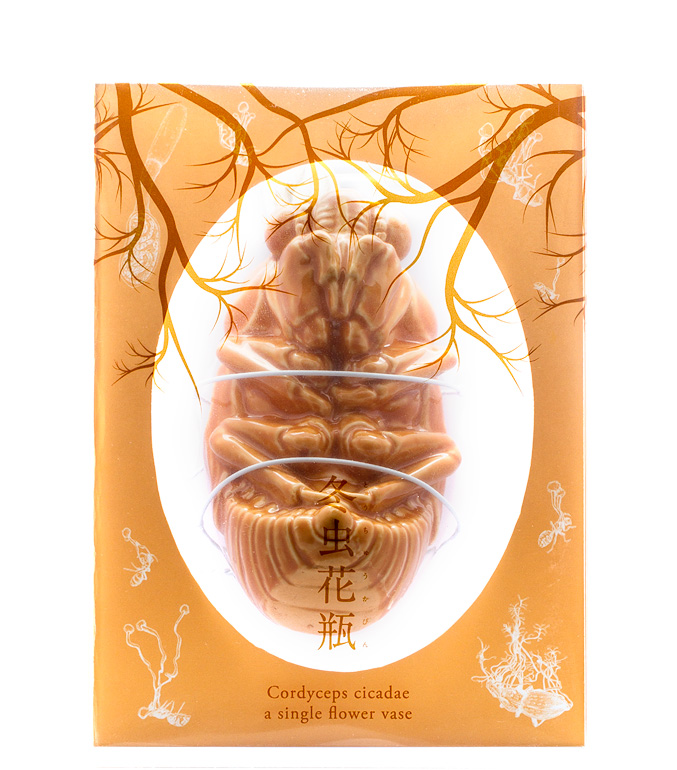Insect art: Cordyceps cicada vase
I have always been inspired by art, and I try to express this through my photography or in my drawings (not that I draw much these days). It is therefore understood why I love artwork and designs that are directly connected to my other passions: nature and small creatures. It is not difficult to find nature-inspired art or designs; they are everywhere, especially nowadays, where the biomimicry concept has become very popular in engineering and technology.
Insect-inspired art/design is also found out there, but it is much more scarce. In particular, it is difficult to find pieces that represent species other than iconic ones (for example, the monarch butterfly, the ladybug or the stag beetle), or a biological phenomenon.
Since an early age I was interested in such artwork and representation of insects in different cultures. Luckily, there is an excellent blog dedicated to this topic, The Endless Swarm, which allows me to follow my interest. I recommend checking it out if you are interested in insect art. I hope to follow the same path – whenever I stumble upon artwork that I find interesting, I will present it in this blog.
In this first insect art post, I would like to present a beautiful product from Japan: The Cordyceps cicada vase.
Singing cicadas have been a part of the Japanese culture for many years. They are depicted in drawings and small figurines on pottery and wood art. This vase is a relatively new product, it was released in spring 2013. Surprisingly, the vase depicts a cicada nymph, in contrast to adult cicadas that are more commonly seen in similar artwork. The idea is to show an insect that is infected with Cordyceps, a genus of parasitic fungi that attack arthropods, and through complex mind-control alter their behavior to reach a preferred spot for releasing the spores. When the host reaches its destination, the fungal fruiting body emerges from its head, killing it in the process.
The cicada nymph vase come secured in a box that makes it look like it rests in its preferred habitat: underground, between roots of trees that are its food.
The box is decorated with beautiful artwork by Takuhiko Yokoyama, showing different insects infected with Cordyceps fungus. I highly recommend checking the artist’s personal webpage for more beautiful insect art (his digital paintings and other works are recommended!).
The detail and finish on the vase is very impressive. It has the appearance of a big caramelized cicada nymph. Almost anything placed into the vase (even flowers and branches) makes it look like a Cordyceps fungus emerging from the cicada’s head. I decided to demonstrate this using something a little more faithful to the charismatic parasite – Buna-shimeji mushrooms I had in my fridge.






